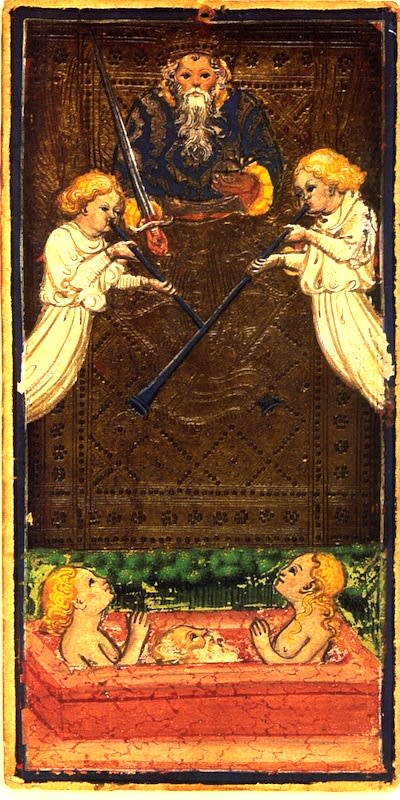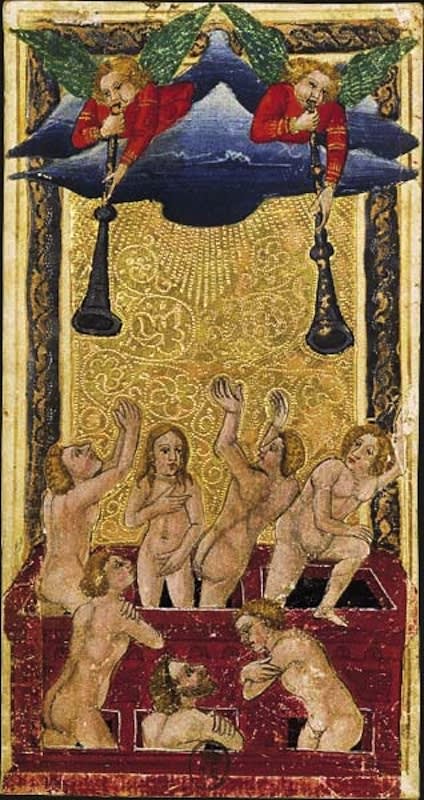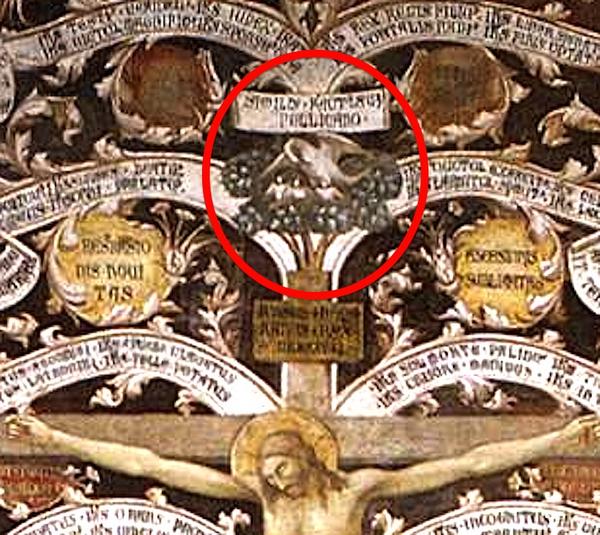Cartomancer
The TOAD in the alchemical image corresponds to the third person showing his back in TdM.
And the cross on the banner attached to the trumpet in TdM might represent the sun in the alchemical image.

The two DRAGONS in the alchemical image may have something to do with the two ANGELS in old hand-painted cards such as those of Visconti-Sforza and 'Charles VI'.


I think the coffins in the Judgement cards are actually pictures of Christian constellations that were well-known at the time of the Tarot's creation, which give meaning to the alchemical symbols. The cross actually represents the Church. The angel may be the Archangel St. Michael over the stars of Ursa Minor and Draco.
Several Tarot cards may have come from Christian astronomical concepts that were drawn centuries later in 1627 by Julius Schiller but well-known to Christians at the time who knew some constellations by Christian names, such as the "Northern Cross." Later decks appear to copy these images.
Book: Coelum Stellatum Christianum
Creator: Schiller, Julius, d. 1627.
Contributors: Bayer, Johann, 1572-1625.; Schecks, Kaspar, d. 1665.; Kager, Johann Matthias, 1575?-1634. ; Kilian, Lucas, 1579-1637.
Go to the page numbers on right. All pictures are at this site:
http://lhldigital.lindahall.org/cdm/ref/collection/astro_atlas/id/1142
The Judgement card:
Page 29. Constellation I. Star Map. St. Michael the archangel over the stars of Ursa Minor and Draco.
Page 63. Constellation XX. Star Map. Holy Sepulchre formerly Andromeda.
Also see the ark outline:
Page 77. Constellation XXVII. Star Map. St. James the Less, Apostle formerly Virgo.
-------------------------
The Hermit card:
Page 55. Constellation XIII & XIV. Star Map. St. Benedict & the Thorn Bush over the stars of Serpentarius & Serpens.
-------------------------
The Pope card:
Page 37. Constellation Va. Star Map. St. Sylvester, Pope, over the stars of the constellation Bootes.
-------------------------
The Hanged Man card:
Page 47. Constellation IX. Star Map. St. Helen in the stars of Cygnus (The Northern Cross, the Swan). Could the Hanged Man actually been Jesus on Northern Cross or St. Helena, but changed to get those holy figures out of the picture?
- Cartomancer (Lance Carter)











